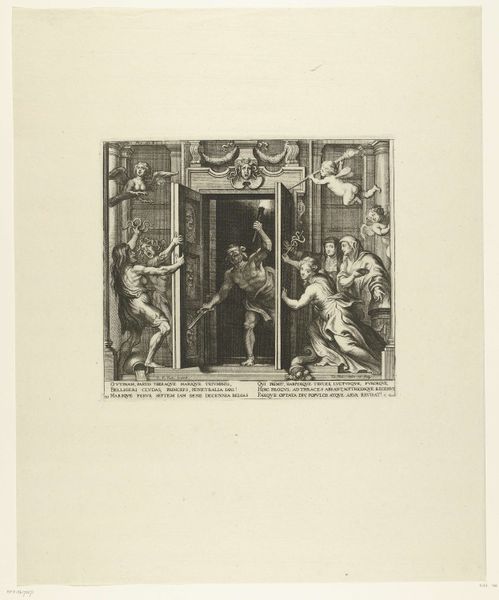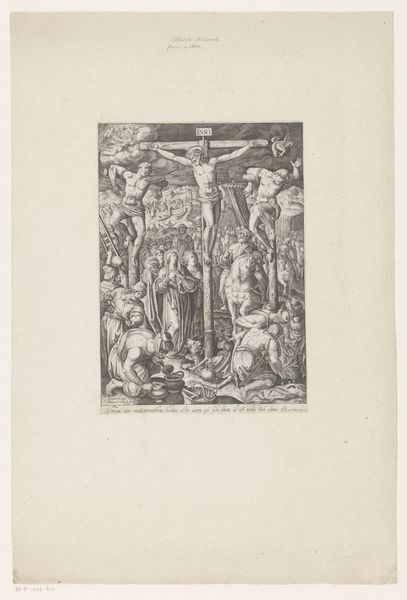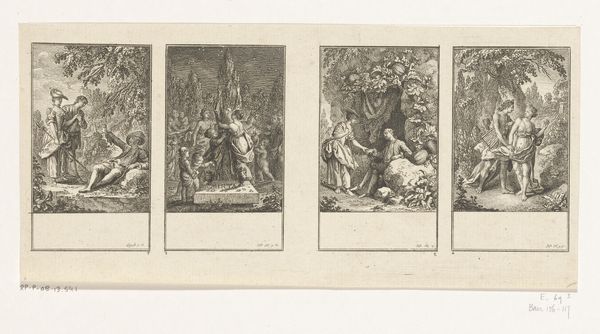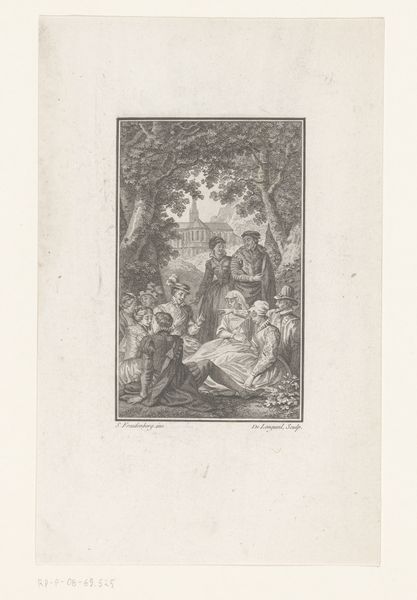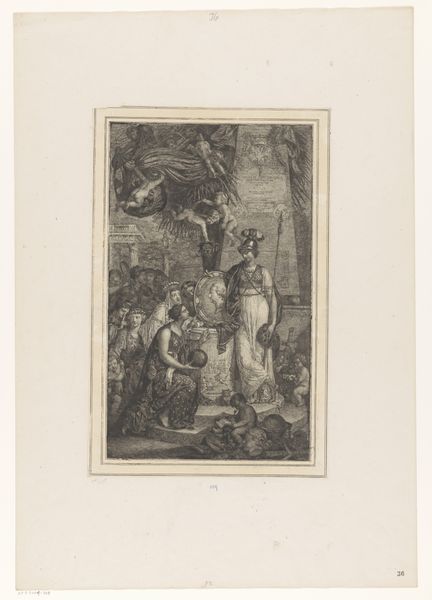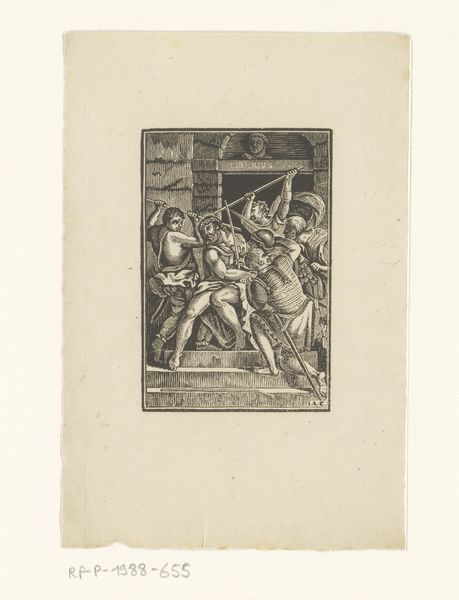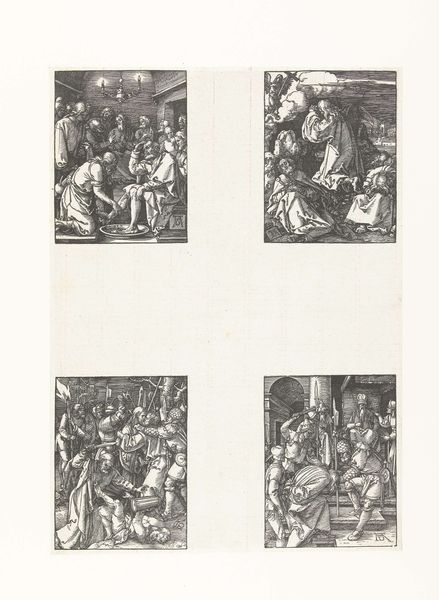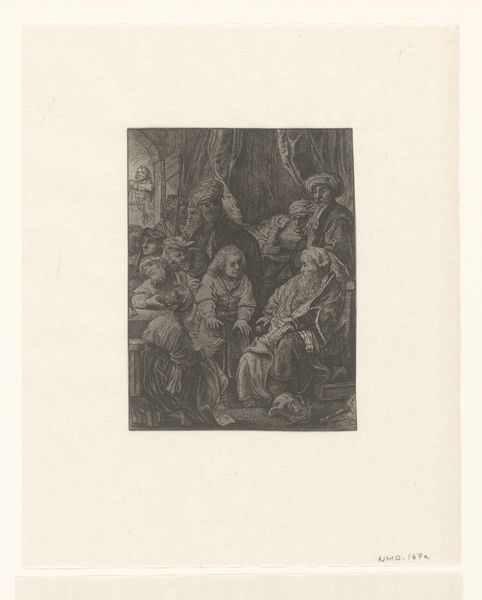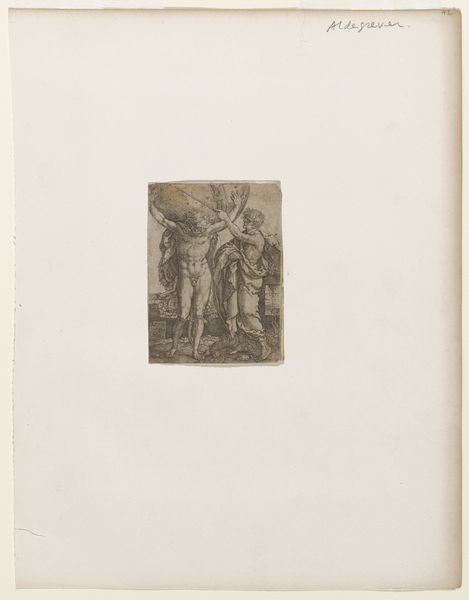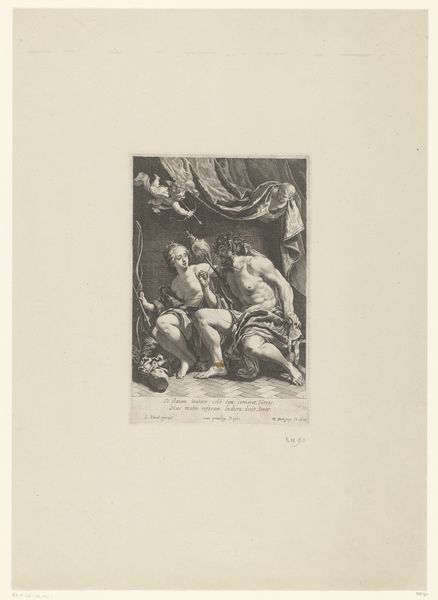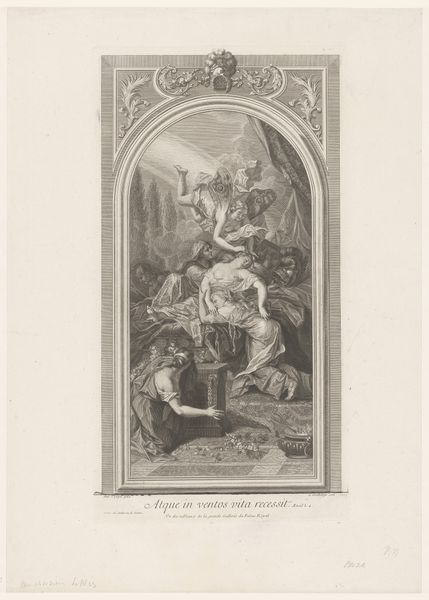
print, engraving
#
portrait
#
baroque
# print
#
cityscape
#
engraving
Dimensions: height 166 mm, width 124 mm
Copyright: Rijks Museum: Open Domain
Curator: This engraving before us, created by Theodor Matham in 1628, is titled "Haarlemse Stedenmaagd met stadsgezicht" and held at the Rijksmuseum. Editor: My initial impression is of a contained yet elaborate world—intricate details bounded by a rather rigid structure. It feels almost like peering into a miniature stage setting. Curator: Precisely. The composition employs classical elements: notice the central figure, the Haarlem city maiden, framed by symbolic motifs. Angels hover above, each holding shields. Below, the scene culminates in an inscribed tablet, adding textual weight to the imagery. Consider the way Matham uses light and shadow, the balance within this self-contained plane, as they speak volumes to the allegorical richness of the scene. Editor: Right, and let's also note that the texture, despite being a print, feels remarkably tactile. I'm struck by the deliberate, crafted nature of each line and mark. We have to remember this wasn’t mass-produced using automated techniques. Human labour, skill, and close material engagement with the copper plate, and the implications for trade in printed images. The choice of engraving speaks to a desire for replicability, connecting this image to a larger economic network. How were prints traded and sold and displayed at this time? Curator: An excellent point. This replicability served the spread of humanist ideals but within structured hierarchies and classical artistic modes of expression, it’s almost architectural with allegorical intent at its heart. Each part adheres to a logical hierarchy of symbolism within a rigid, frame. The composition and thematic layering all function like a precisely arranged building, or temple, each section informing the other, but on paper instead of stone. Editor: Absolutely! This interplay reveals how materials and modes intersect: an embrace of commerce hand in hand with art’s traditional aim for legacy and endurance. This piece represents the beginning of image consumption. In order to study its full effect one would really want to track the use, aging and journey from creation to when it enters places like The Rijksmuseum. How have these engravings been used by diverse hands across the decades? Curator: I find that incredibly valuable to explore; that history is ingrained in every curve and contour and is as important to decoding Matham’s work as are the technical components of its creation. Editor: Agreed, recognizing the value inherent in these art objects through production and material allows a new reading into art of that age.
Comments
No comments
Be the first to comment and join the conversation on the ultimate creative platform.
